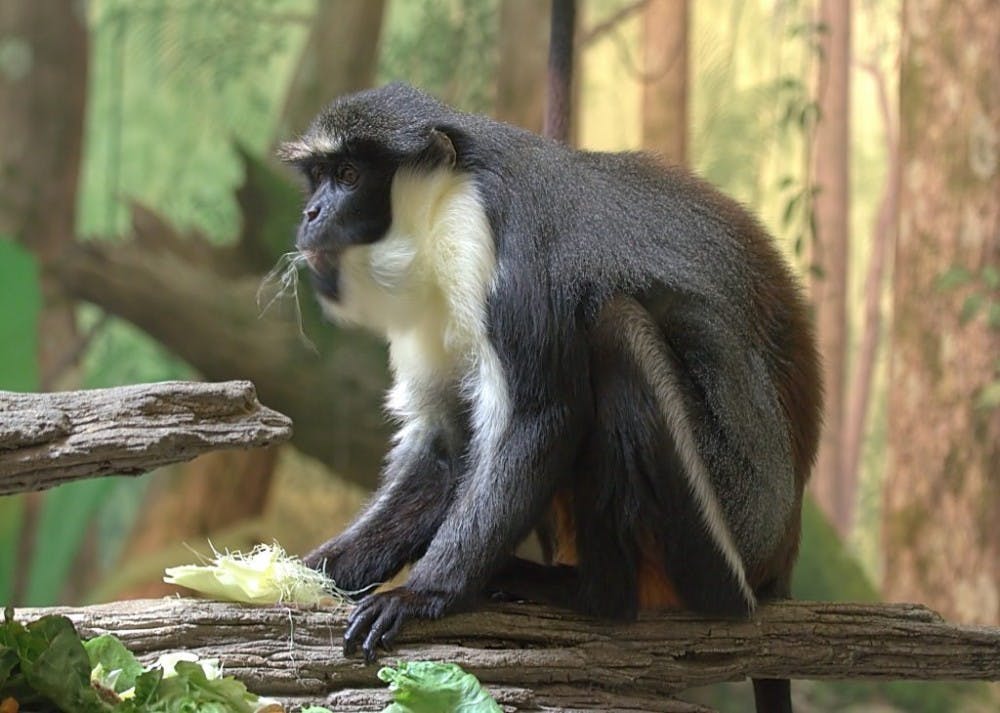Researchers from the Florida Atlantic University (FAU) have discovered an entirely new population of critically endangered monkeys in one of the most isolated regions on Earth. Utilizing remote sensing cameras and audio recorders, the team is the first to capture footage of the rare, largely unknown monkey population known as the Dryas. The monkey species has long been thought to be solely native to a small area in the Congo basin, a hypothesis that has been recently debunked.
The new population was found in the Lomami National Park in the Democratic Republic of Congo in Central Africa. This huge park encompasses approximately 2.2 million acres and is roughly 50 times larger than Washington, D.C. and about the same size as Yellowstone National Park.
The discovery of the species’ previously unknown population is rather peculiar, as field teams from the Lukuru Foundation and Tshuapa-Lomani-Lualaba (TL2) Project noticed a hunter with a dead monkey at the edge of the Lomami National Park boundary. Upon further analysis, the team was able to confirm that this was in fact a Dryas monkey. The species itself was first discovered in 1932 and is believed to be critically close to extinction because its tiny population size has been left unprotected by hunting regulations. The species has continued to befuddle scientists, as it is so difficult to study in nature.
“The Dryas monkey is extremely cryptic, and we had to think of a creative strategy to observe it in the wild,” Kate Detwiler, a primatologist and assistant professor at FAU’s Dorothy F. Schmidt College of Arts and Letters anthropology department said. “Dryas monkeys are drawn to dense thickets and flooded areas. When threatened, they quickly disappear into a tangle of vines and foliage, mastering the art of hiding.”
Detwiler has collaborated with researchers at the Lukuru Foundation for over eight years and aided in the discovery of the Lesula monkey in 2012, a novel monkey species also seen in the Lomami National Park.
Detwiler has piloted efforts to study the Dryas monkey along with her partner John Hart. Detwiler and Hart have led the TL2 Project team in scoping out the rainforests of the Democratic Republic of Congo for endemic and endangered species.
As you may imagine, capturing video or audio footage of a creature as elusive as the Dryas monkey was no easy feat and required quite a deal of unorthodox thinking on Detwiler’s part. She employed 24-year-old Daniel Alempijevic, a master’s degree candidate at FAU’s Environmental Sciences Program, who learned to climb incredibly tall trees and is the first person to conduct an arboreal trap survey in the TL2 Landscape. Alempijevic spent an entire semester in the Lomami National Park choosing prime locations to plant cameras on the ground, mid-range, and canopy of the forest to find out which elevation Dryas monkeys prefer.
“It was an opportunity of a lifetime. It was an incredible experience to work in the canopy of such a remote site, and to get the first camera-trap videos of an extremely rare and elusive species,” Alempijevic said.
Thanks to his efforts, the recordings that the camera traps took are providing scientists with invaluable information regarding the Dryas monkeys, along with other species found in the Lomami National Park. The cameras were able to gather intel on the bonobo, African palm civet and the potto.
The extent of Detwiler’s work reaches beyond conservation efforts, as she and her team are trying to elucidate the evolutionary framework of the Dryas monkeys.
Utilizing genomic research to examine the validity of a hypothesis stating that the Dryas are close relatives of the vervet monkey, the Detwiler laboratory has been tirelessly studying the vervet monkey population in Fort Lauderdale, Fla. since 2014. Soon, they hope better to decode the relationship between these two largely unknown species and how they fit within evolution.
















Please note All comments are eligible for publication in The News-Letter.